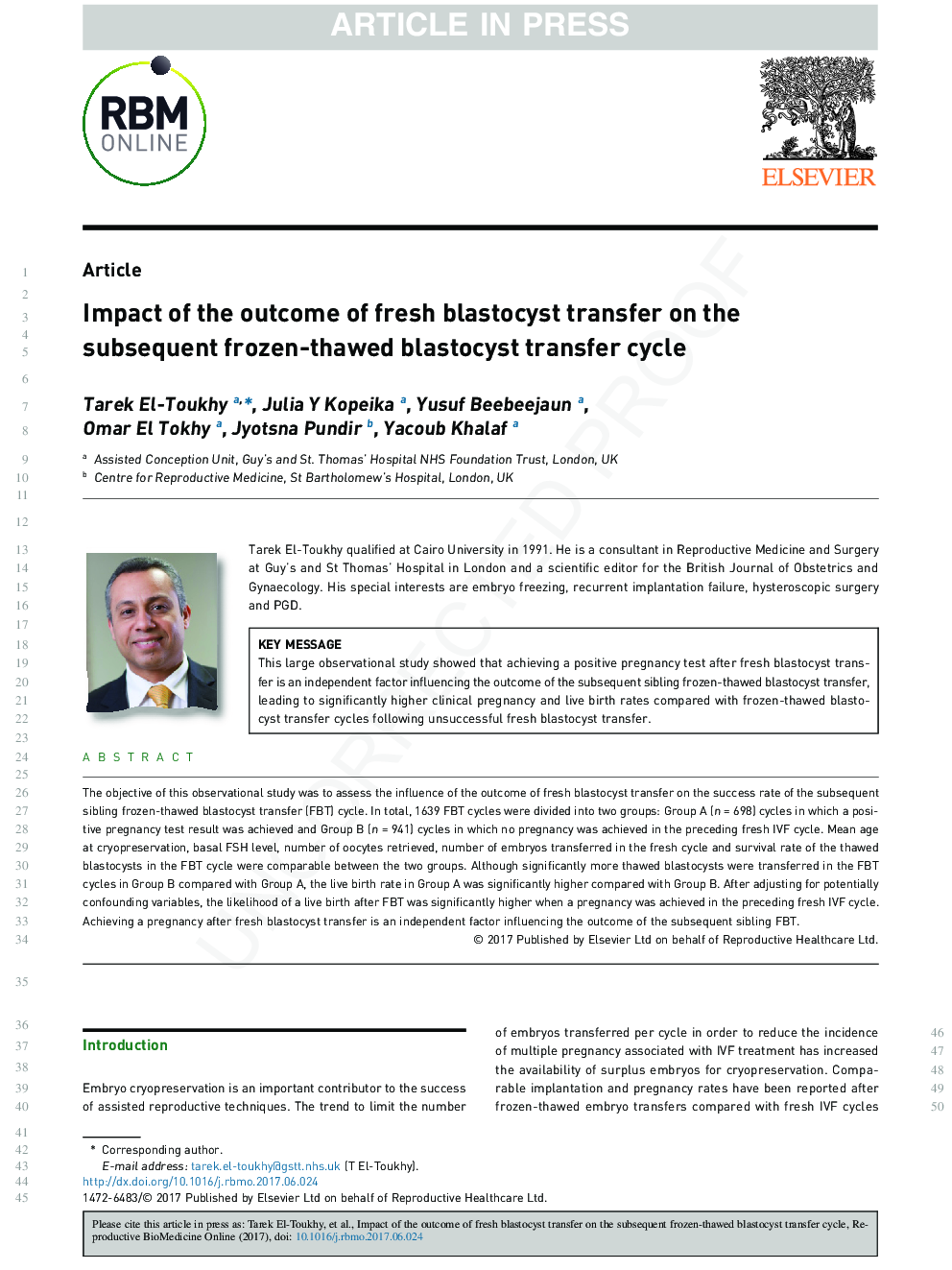| Article ID | Journal | Published Year | Pages | File Type |
|---|---|---|---|---|
| 8784147 | Reproductive BioMedicine Online | 2017 | 6 Pages |
Abstract
The objective of this observational study was to assess the influence of the outcome of fresh blastocyst transfer on the success rate of the subsequent sibling frozen-thawed blastocyst transfer (FBT) cycle. In total, 1639 FBT cycles were divided into two groups: Group A (n = 698) cycles in which a positive pregnancy test result was achieved and Group B (n = 941) cycles in which no pregnancy was achieved in the preceding fresh IVF cycle. Mean age at cryopreservation, basal FSH level, number of oocytes retrieved, number of embryos transferred in the fresh cycle and survival rate of the thawed blastocysts in the FBT cycle were comparable between the two groups. Although significantly more thawed blastocysts were transferred in the FBT cycles in Group B compared with Group A, the live birth rate in Group A was significantly higher compared with Group B. After adjusting for potentially confounding variables, the likelihood of a live birth after FBT was significantly higher when a pregnancy was achieved in the preceding fresh IVF cycle. Achieving a pregnancy after fresh blastocyst transfer is an independent factor influencing the outcome of the subsequent sibling FBT.
Related Topics
Health Sciences
Medicine and Dentistry
Obstetrics, Gynecology and Women's Health
Authors
Tarek El-Toukhy, Julia Y. Kopeika, Yusuf Beebeejaun, Omar El Tokhy, Jyotsna Pundir, Yacoub Khalaf,
